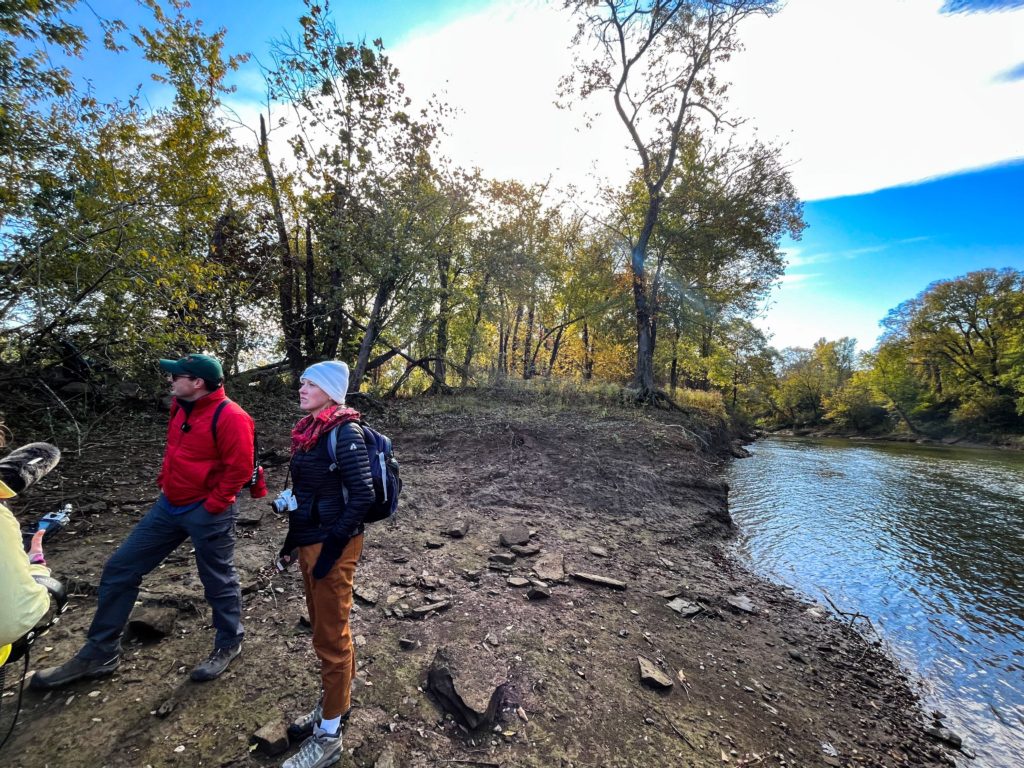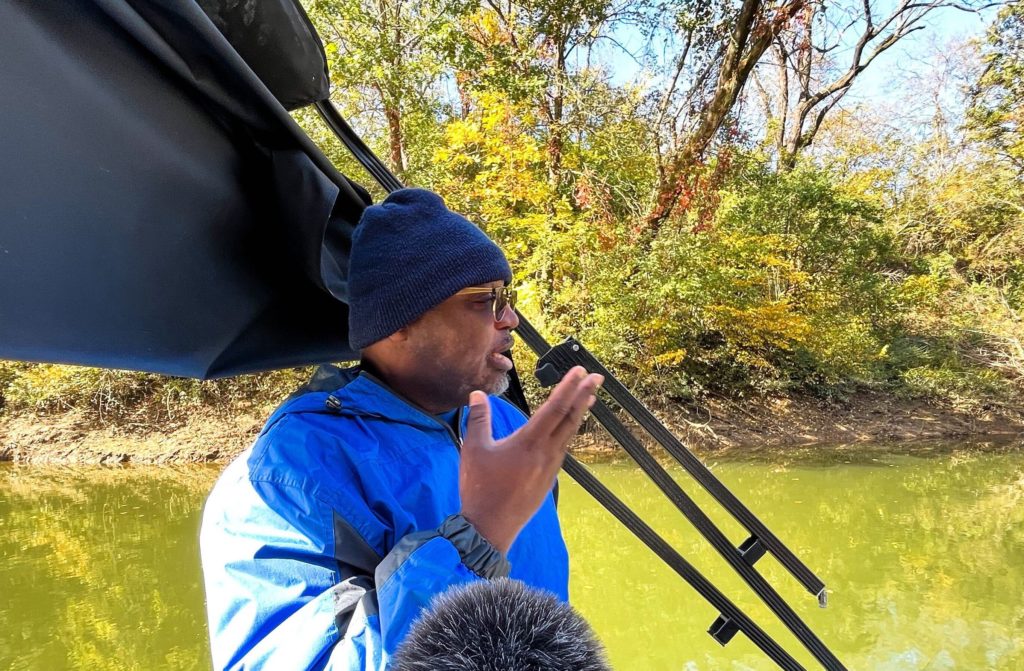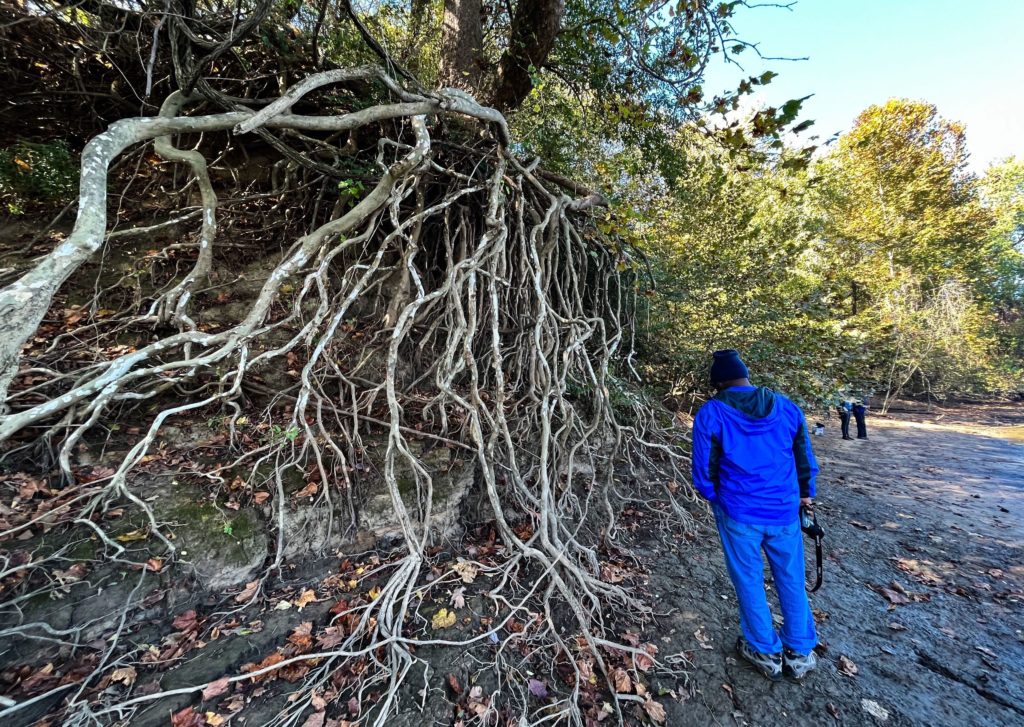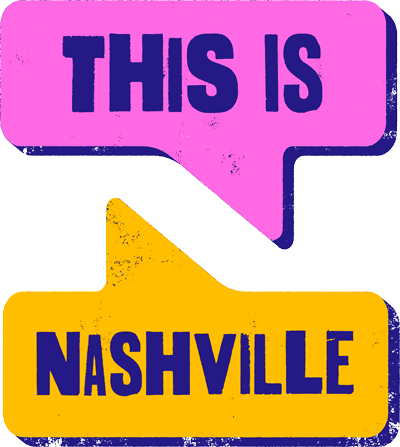
In the Cumberland River, near Old Hickory, there’s an elusive island.
Hill’s Island is 20 acres of uncharted land, filled with a pawpaw grove, dotted with tall red maples and hackberries, and inhabited by the occasional deer or raccoon.
You wouldn’t know by looking at it today, but this island has an important story to tell about Nashville’s role in the trade of enslaved people, and the lives these people lived in the mid-1800s.
“In looking at this history, I’m thinking we might be on the verge of retelling the early history of Nashville,” says Tennessee State University’s Dr. Learotha Williams.
Listen to the full episode on This Is Nashville: Nashville’s role in the slave trade
That’s why, when the Cumberland River Compact was gifted the land by TennGreen Land Conservancy in 2021, they partnered with Williams to better understand this history — starting with how the island came to be named after Harry R.W. Hill.
“Truth be told, I still don’t know. But Hill was one of the wealthiest businessmen in this city. And when I say business, always bear in mind that slavery was first Nashville’s first big business,” Williams says.
 Andrea Tudhope WPLN News
Andrea Tudhope WPLN NewsTSU professor Learotha Williams has been digging into tax records, wills and deeds to understand just how big a business the buying of enslaved people was for the foundations of modern Nashville.
Hill came to Tennessee in 1802 from North Carolina, and quickly became one of the most renowned figures in both Nashville and New Orleans. He earned his fortune on land, cotton and enslaved people. Early Davidson County tax records show that Hill was one of Nashville’s largest property owners. At the time of his death in 1853 he enslaved more than 1,000 African American men and women.
But Hill didn’t own the island. John Donelson did. Donelson, of course, staked a claim and settled what became modern Nashville, displacing countless Native Americans who had long called this place, and presumably this island, home.
Donelson’s Nashville, our Nashville, was built on the backs of enslaved people.
“Nashville was a place that became known largely initially because of its position as the second-largest slave port in the state,” Williams says. “A lot of enslaved people came through here trying to get free. We look at the river oftentimes as a geographical boundary, something that had to be crossed. By the same token, you can make the argument that rivers were avenues for emancipation. So the same way Harry Hill and others took people down the river to be enslaved, this river could have been an avenue for freedom.”
“You can make the argument that rivers were avenues for emancipation. So the same way Harry Hill and others took people down the Cumberland River to be enslaved, this river could have been an avenue for freedom.”
And, as such, Hill’s Island very well could have been a hideout for these freedom seekers. But there’s no clear record of that, at least none that Williams has found yet. As it is, the only written record of this island is the diary of Emily Donelson Walton, the granddaughter of John Donelson.
So there’s a lot still to uncover. What Williams is most interested in is what life was truly like for the people these men sold, bought and forced into labor.
There’s one in particular who caught his attention. His name was George.
“Like most of the African Americans who were enslaved, what we know about him usually comes from the observations of the enslavers,” he says.
Our account of George comes from Emily’s diary. A lot of the language she used to describe him should be taken with a grain of salt. We know he had a family, but it seems they stayed on the Donelson plantation just across the river on the mainland, while George spent summers on Hill’s Island.
 Andrea Tudhope WPLN News
Andrea Tudhope WPLN NewsAlong the west (left) of Hill’s Island is a narrow inlet of the Cumberland. It’s about 30 feet wide, and only seven deep. Back when George was living on the island, according to Emily Donelson’s diary, his family stayed on the Donelson plantation just across the river to the east (right).
“[She] talks about him coming back to the plantation after the summer ends and he’s having skins and nuts and things that he’s collected from out here,” Williams says.
Emily wrote that George had shaved teeth. Body modification was common where he was likely from on the Guinea Coast of Africa. Historically, teeth sharpening was often an expression of identity and spiritualism. But, Williams says it’s also possible George did this to keep his enslavers in fear.
“Enslaved African Americans oftentimes engaged in psychological resistance, where you can’t physically do anything to better your situation, but you can use your mind maybe to pull one over on your enslavers to make your life a little bit better,” he says.
Whether George was banished to the island or not, we don’t know. But either way, Williams imagines living on Hill’s Island gave George a fair amount of autonomy.
“When you read the diary, it talks about him walking around singing songs or speaking a foreign language. So being here might have insulated him from the pressures of conforming to what Donelson and others would have wanted him to become,” he says.
 Andrea Tudhope WPLN News
Andrea Tudhope WPLN NewsThis was Dr. Learotha Williams’ first visit to Hill’s Island. Standing on the island’s east shore, he stopped to imagine how George, an enslaved man who spent summers there in the early 1800s, might have lived.
The island today is untouched. The only trails we find are game trails. We walk south, then make our way to the other side. It’s really not too far across. But far enough that it’s easy to imagine George living a quiet life here. When we reach the east shore, Williams stops to look around.
“It hasn’t been lost on me that I’m probably one of the few Black men that have actually been to this island over the last 150 some years,” Williams says. “But my part in this narrative is to try to learn more about them, to maybe reveal a little bit more about Nashville’s Black past and, by extension, the city’s history as well, because you can’t separate their presence here … from the development of Nashville during the territorial period.”
“I don’t know how this thing is going to turn out. I don’t know what this place is going to become. But I know I’m grateful that at least in this telling of the story, the African American presence won’t be left out of it like it has been in the past.”
Andrea Tudhope is the executive producer of WPLN’s daily show This Is Nashville. Email her at [email protected], and follow her on Twitter @andreatudhope.


